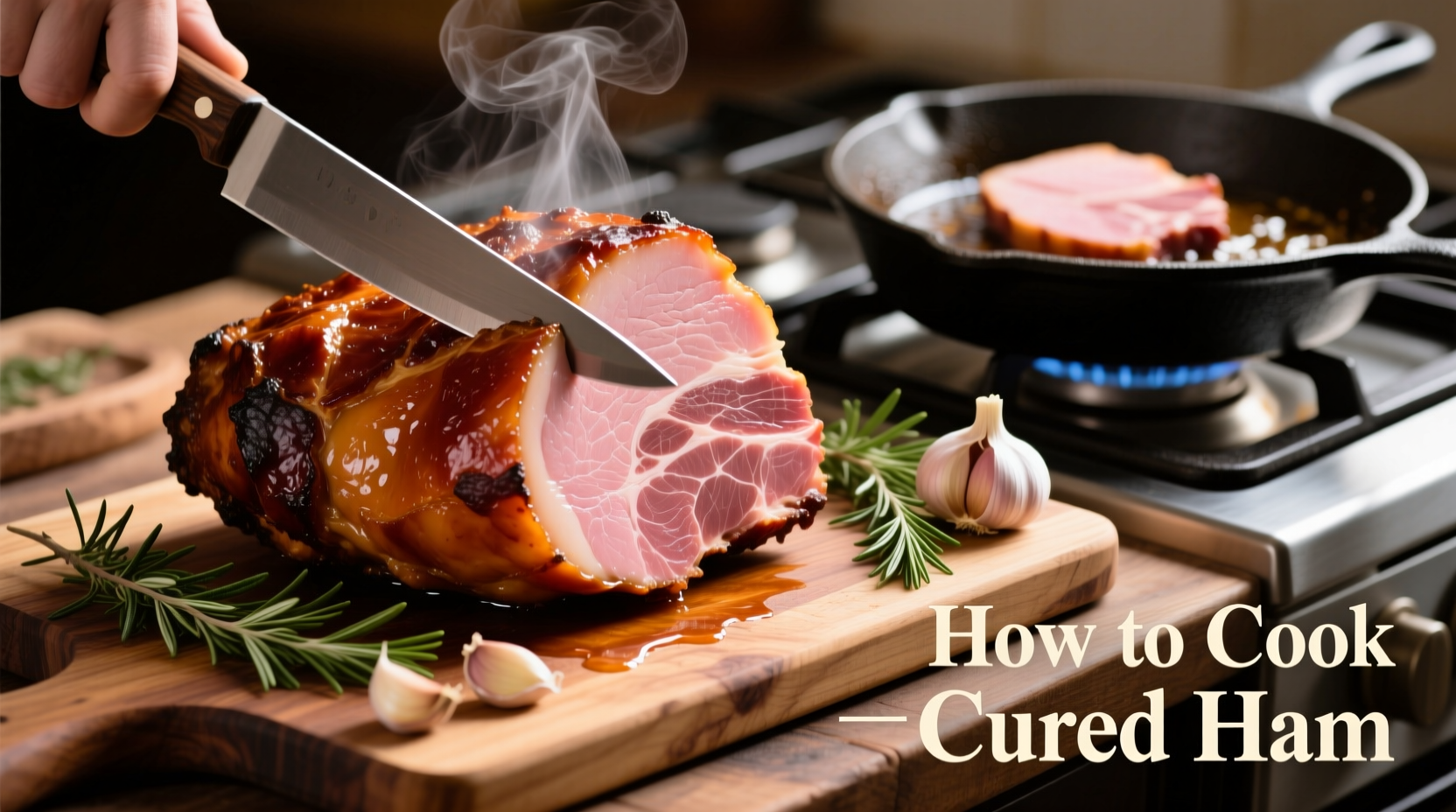Understanding the difference between cured ham varieties is crucial before you start preparing your meal. Many home cooks mistakenly believe all cured hams need cooking, potentially ruining delicate flavors of ready-to-eat varieties like Italian prosciutto or Spanish jamón serrano. Let's clarify exactly how to handle each type properly.
Understanding Cured Ham Types: What Needs Cooking?
Cured ham isn't a single product—it encompasses several distinct preparation methods with different end results. The critical distinction lies between ready-to-eat cured hams and country-style hams that require preparation.
| Type of Cured Ham | Preparation Required | Common Regions | Flavor Profile |
|---|---|---|---|
| Prosciutto (Parma, San Daniele) | None - ready to eat | Italy | Sweet, delicate, nutty |
| Jamón Serrano/Iberico | None - ready to eat | Spain | Rich, complex, slightly salty |
| Country Ham (Virginia, Tennessee) | Soaking and cooking required | Southern United States | Intensely salty, robust |
| Black Forest Ham | None or light heating | Germany | Smoky, mildly sweet |
According to the USDA Food Safety and Inspection Service, ready-to-eat cured hams like prosciutto undergo a lengthy curing process (typically 12-36 months) that makes them safe for consumption without additional cooking. Country hams, however, have a much shorter curing period and higher salt content that requires preparation before eating.
Preparing Ready-to-Eat Cured Hams Properly
For prosciutto, serrano, and similar ready-to-eat cured hams, cooking would actually damage their delicate flavor and texture. Instead, follow these professional preparation techniques:
Optimal Slicing Technique
- Temperature matters: Remove ham from refrigerator 30 minutes before slicing
- Use the right knife: A flexible, narrow slicing knife (8-10 inches) works best
- Slicing angle: Cut at a 45-degree angle for paper-thin slices
- Thickness: Aim for slices no thicker than 1/16 inch for optimal texture
Serving Suggestions for Ready-to-Eat Cured Ham
Professional chefs recommend these presentation methods that enhance flavor without cooking:
- Arrange on a wooden board at room temperature for 20 minutes before serving
- Pair with complementary items: melon, figs, aged cheeses, or crusty bread
- Drizzle with high-quality olive oil and cracked black pepper
- For prosciutto, wrap around asparagus spears or grilled peaches

How to Prepare and Cook Country Ham Properly
If you've purchased a traditional Southern country ham, proper preparation is essential. Country hams undergo a shorter curing process (typically 6-18 months) with higher salt content that requires soaking and cooking.
Step-by-Step Country Ham Preparation
- Soaking: Submerge the ham in cold water for 12-24 hours in the refrigerator, changing water every 6 hours
- Trimming: Remove excess fat, leaving about 1/4 inch for flavor and moisture
- Cooking method 1 (Baking): Place ham in roasting pan with 1 cup water, cover with foil, bake at 325°F for 15-18 minutes per pound until internal temperature reaches 140°F
- Cooking method 2 (Boiling): Simmer gently in water with aromatics (onion, cloves, peppercorns) for 20-25 minutes per pound
- Glazing (optional): During last 30 minutes of baking, apply brown sugar and spice glaze
The National Center for Home Food Preservation at the University of Georgia confirms that proper soaking reduces salt content from approximately 5-6% down to a more palatable 2-3%, making country ham enjoyable without being overly salty.
Avoiding Common Cured Ham Mistakes
Based on culinary expert observations, these are the most frequent errors home cooks make with cured ham:
- Mistake: Cooking ready-to-eat prosciutto or serrano ham
Solution: These varieties are meant to be served raw—cooking destroys their delicate texture - Mistake: Insufficient soaking of country ham
Solution: Soak for full 24 hours with water changes for optimal salt reduction - Mistake: Slicing cured ham too thick
Solution: Use proper technique for paper-thin slices that melt in your mouth - Mistake: Serving cured ham straight from refrigerator
Solution: Allow 20-30 minutes at room temperature for full flavor development
Creative Ways to Use Cured Ham in Recipes
While ready-to-eat cured hams shine simply sliced, they also enhance many dishes when used as a flavor component:
- Pasta carbonara: Crisp prosciutto pieces provide authentic texture and saltiness
- Salad topping: Add thin prosciutto strips to arugula salad with lemon vinaigrette
- Breakfast dishes: Wrap around asparagus or use in quiches (add just before serving)
- Soups and stews: Add a small piece of country ham for depth of flavor (remove before serving)
- Pizza topping: Layer prosciutto on white pizza after baking for delicate saltiness
Storage and Food Safety Guidelines
Proper storage maintains quality and ensures food safety:
- Whole, uncut ready-to-eat cured ham: Store at room temperature for up to 1 year
- Sliced ready-to-eat ham: Refrigerate in airtight container for 2-3 weeks
- Cooked country ham: Refrigerate for 5-7 days or freeze for 2-3 months
- Never leave sliced cured ham at room temperature for more than 2 hours
The USDA recommends that all cooked meats, including country ham, should be consumed within 3-4 days when refrigerated at 40°F or below, or frozen for longer storage.
Expert Tips for Perfect Cured Ham Every Time
Professional chefs share these advanced techniques for optimal results:
- For country ham: Add a teaspoon of baking soda to the soaking water to help neutralize saltiness
- For presentation: Let sliced prosciutto rest on parchment paper for 5 minutes to relax and become more pliable
- Flavor enhancement: Lightly brush prosciutto with honey and broil for 30 seconds for a sweet-savory contrast
- Texture improvement: For overly salty country ham, simmer in milk instead of water for a milder flavor
Frequently Asked Questions
Here are answers to common questions about preparing cured ham:











 浙公网安备
33010002000092号
浙公网安备
33010002000092号 浙B2-20120091-4
浙B2-20120091-4